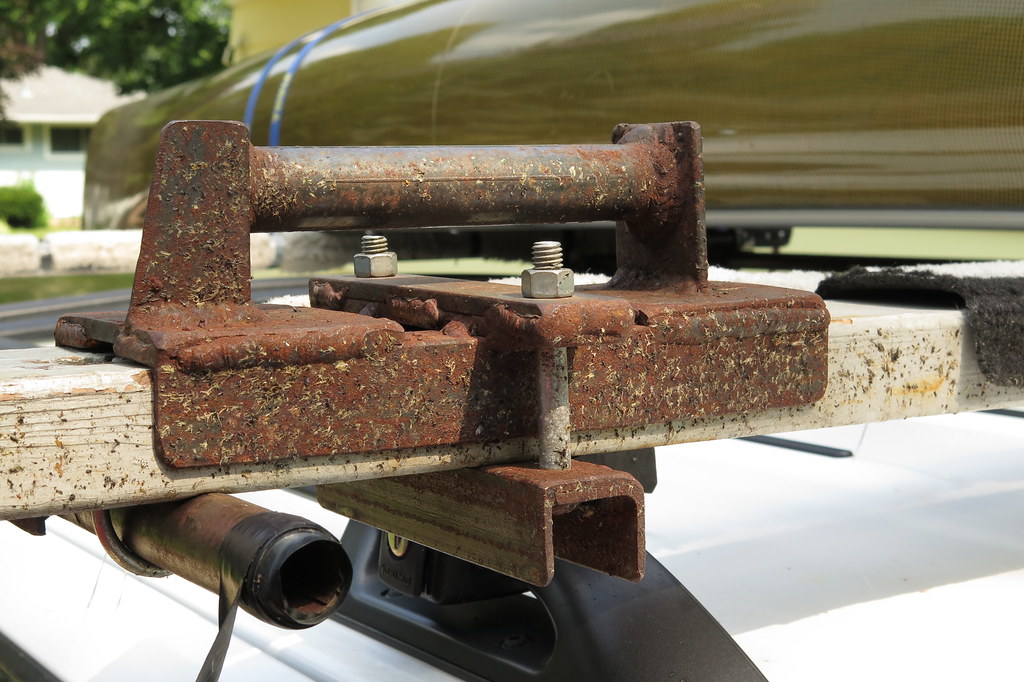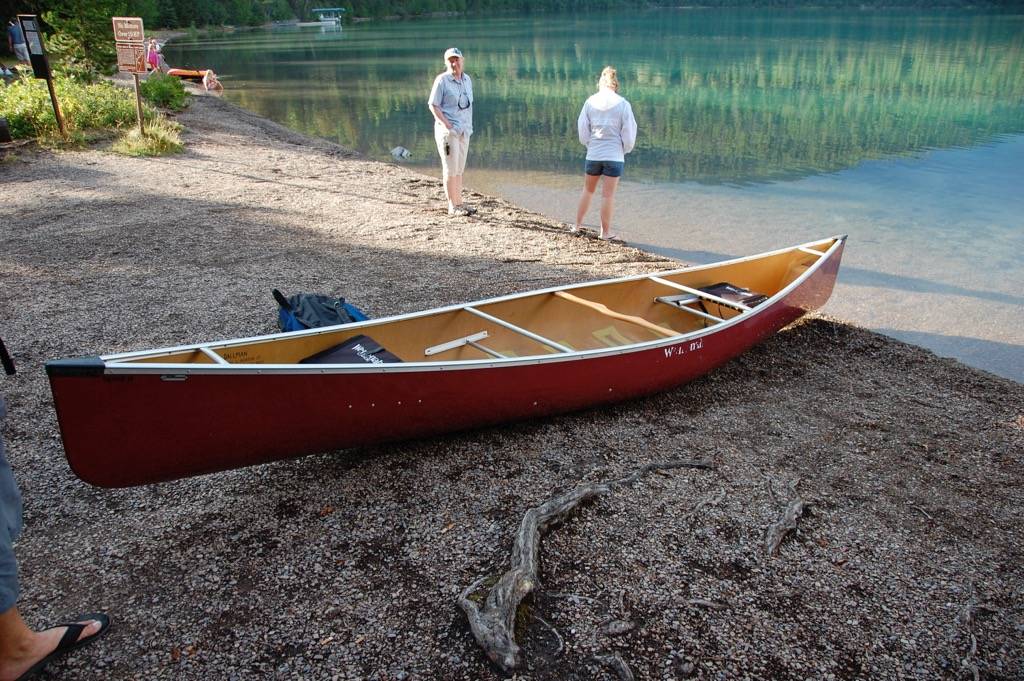When it comes to loading boats, it should be possible to eliminate any need for lifting the boat higher than your head. The first thing to know is that even though a solo canoe has no built-in yoke, you can place the front edge of the seat across the back of your shoulders and provide light stabilization with your hands in front of you holding the gunwales. This is the classic position for one person portaging a canoe that you’ve probably seen lots of times.
As to there being no overhead lifting, ideally, your rear cross bar will be close enough to the rear of the vehicle that you can approach from the rear and put one end of the boat on that bar. Then set the boat down so the other end is on the ground, pick up that end, then slide the boat up onto the rack. Since your rack is on a camper shell, it should be possible to get the rear mounting point far enough back. That mounting point may need to be moved from where it is right now.
You may actually want the rear rack position to be farther ahead than described above so that it provides better boat support when the boats are as far forward as you want them to be when pulling your trailer. In that case, you can lay a rubber-backed bath carpet on the roof of the cab, and perhaps another one on the front edge of the hood. Then you can slide the boat up onto the rack from the front. I know one tandem-canoe-paddling couple that consists of a middle-aged mom and her daughter who is quite small, and they load their heavy Old Town Discovery onto a rack that’s as high as yours like this: They position themselves on opposite sites of of the boat’s center, walk to the front of the vehicle with one end of the canoe pointing upward (that’s simply done by hand manipulation when carrying the boat this particular way). They get one end onto the front cross bar, and then they “hand walk” their holding position along the gunwales to keep pushing the boat farther and farther onto the rack. Finally, the boat plops down level, and it’s easy to slide it back the rest of the way. When doing this, their hands are never higher than waist high until until most of the boat is onto the rack. You can see that when front-loading like this in a case where the front cross bar is “way back there” on the camper shell, non-slip padding (like a bathmat) on the truck’s roof would come in handy.
Of course, if the trailer is not in the way, you could lay that rubber-backed bath mat on the rear edge of your camper shell and slide the boat up from that direction.
For loading just one boat on your roof, another method that works well is to put a lengthwise bar on each side of your rack. These bars would attach near the outer ends of each cross bar. With that setup, you simply approach from one side and lean the boat against the lengthwise bar. Again, you’d approach with the boat on your shoulders, so this part is very easy. Then you’d step out from under the boat so it’s left leaning there with one end on the ground. You pick up that lower end and slide the boat up onto the rack. The lengthwise bar on the opposite side catches the boat as it plops down level. Then you just slip-slide-shuffle the boat around to the proper position on the two main cross bars. As before, the only time your hands handle the boat up at head-high or higher is after the boat is completely on the rack. There’s no overhead lifting involved.
I have a pair of lengthwise bars on my roof rack. There are a couple pictures in this “album” linked below which give some idea how those side bars are attached (for this, you’ll need to mentally block out some of the extra hardware that’s present and focus only on the carpet-covered Yakima cross bars and the rusty steel lengthwise bars). On my roof rack, though I sometimes use the lengthwise bars for loading (especially when parked on an extreme-sideways incline so that loading from the rear is difficult), the main purpose of those bars is to support an optional pair of extra-long cross bars made from 2x4s, which is why there’re a lot of extraneous parts in most of these photos.
Here’s a pic I took just now that shows the pair of lengthwise bars on my rack. If you can weld, you can make something just like this. If you can’t, Yakima makes something like this, or something that can be adapted in this way, but you could also visit a welding shop and have them make a pair, and it would probably cost a lot less than the Yakima version. I saw a Yakima bar like this at a paddle-sport show last weekend (Canoecopia) and it was as flimsy as heck, but it would have been strong enough to use for side-loading of a canoe. I think they make some sturdy bars like this too, because I’ve seen a guy in my town who incorporates such bars into his roof rack to provide a much greater spread distance between his main cross bars, and it would have to be sturdy to do that.
On that note, you could use such a system to mount the front cross bar well out over the truck’s cab, cantilevered from the four existing support points on the camper shell, and that would simplify the process of loading boats from the front of the vehicle, as well as provide much better support locations when your boats are racked so far forward that they are out of the way of your trailer. I have looked on Yakima’s site for this lengthwise-bar system when trying to give roof-rack advice before and have never found it, but as I said above, I’ve seen such a system in use so I know it exists.






